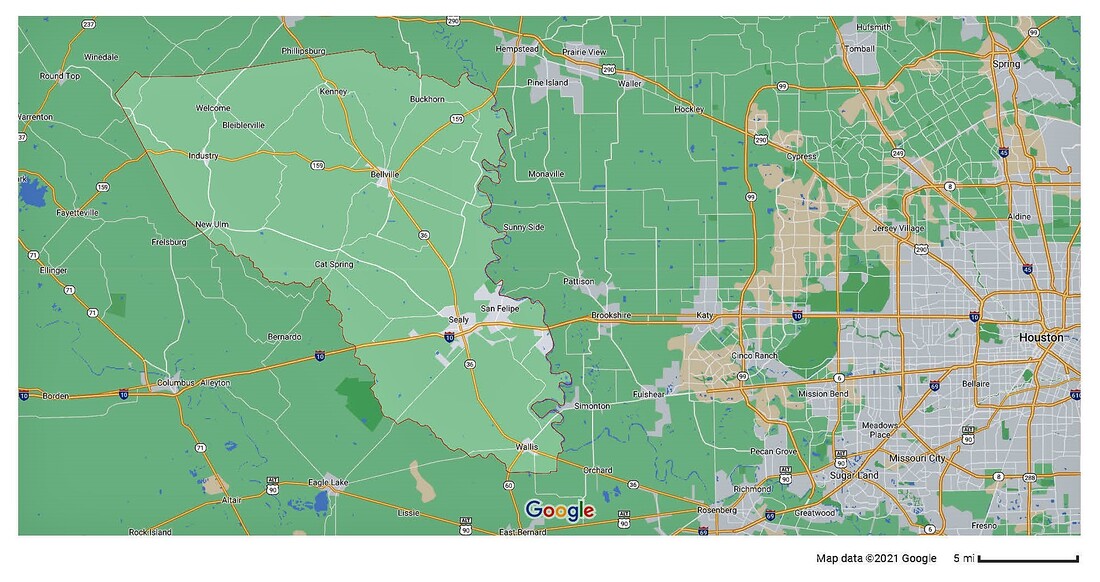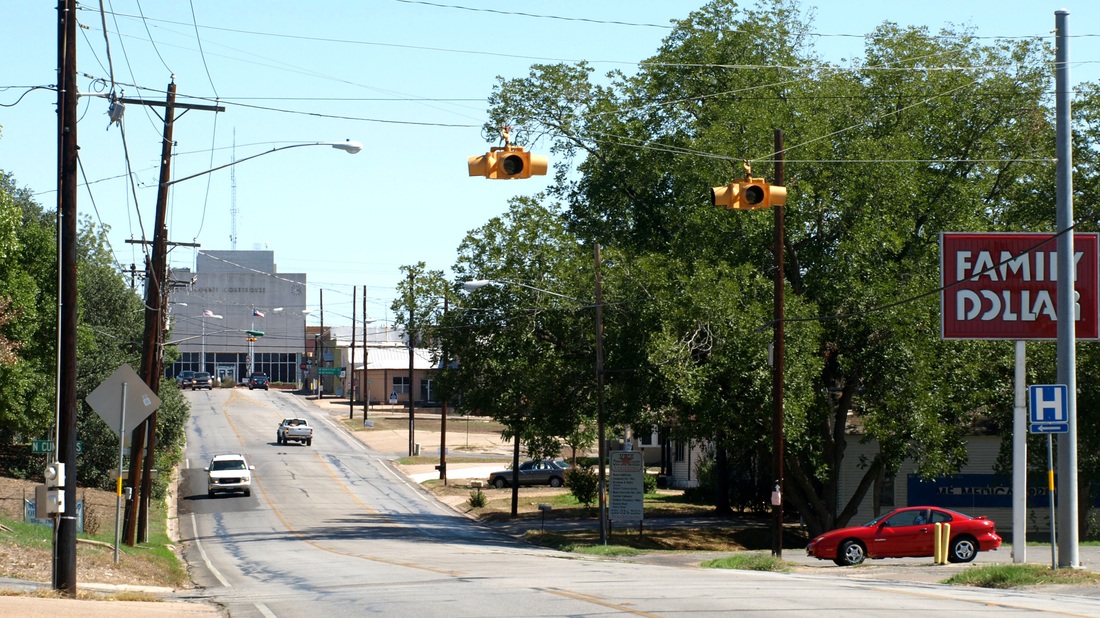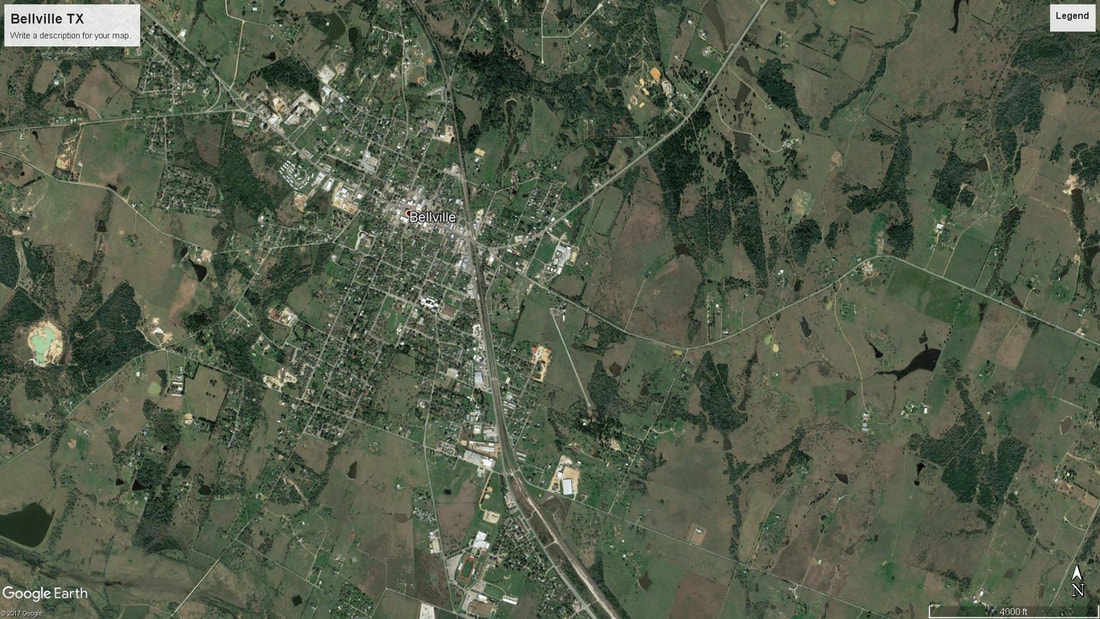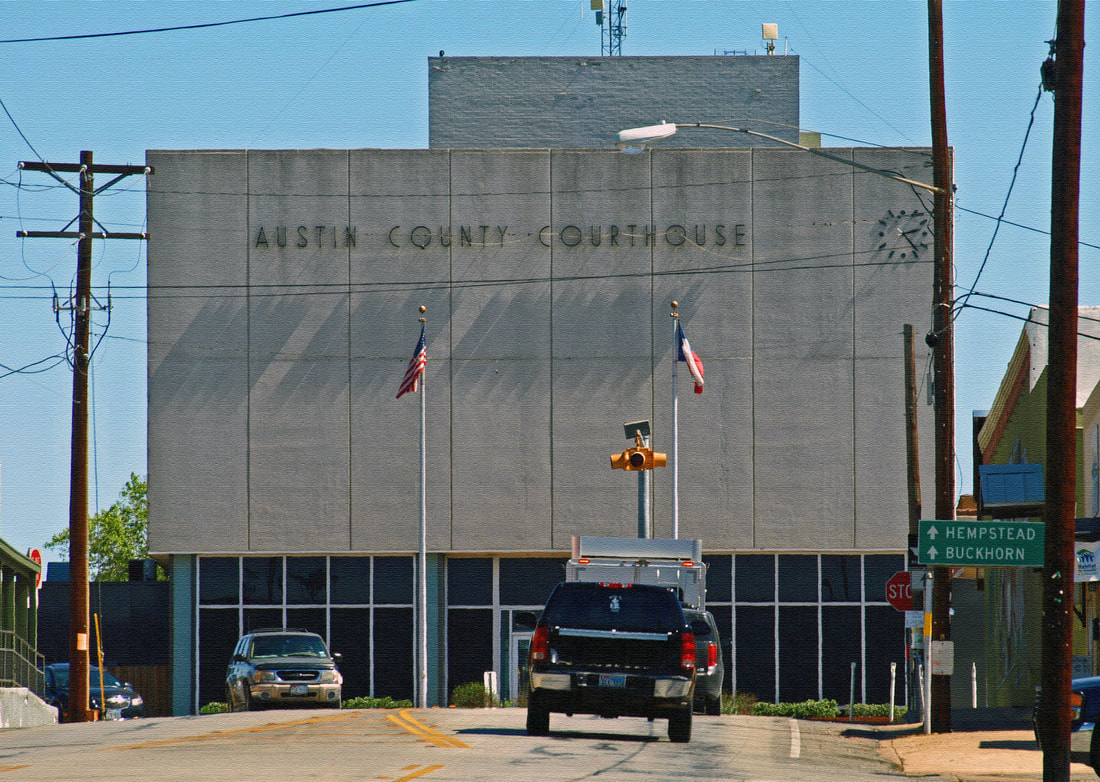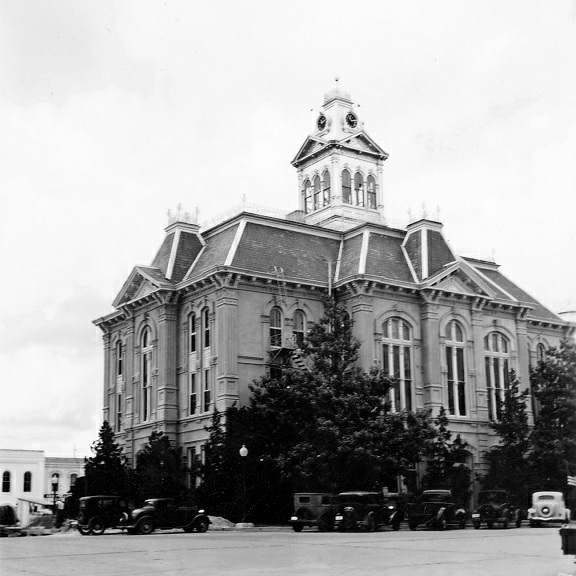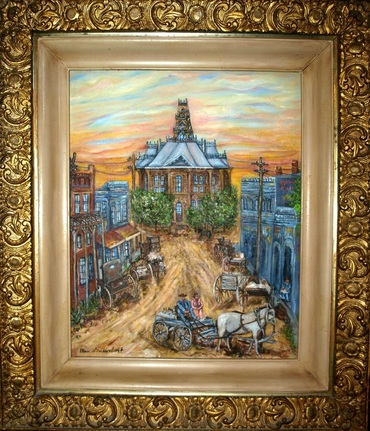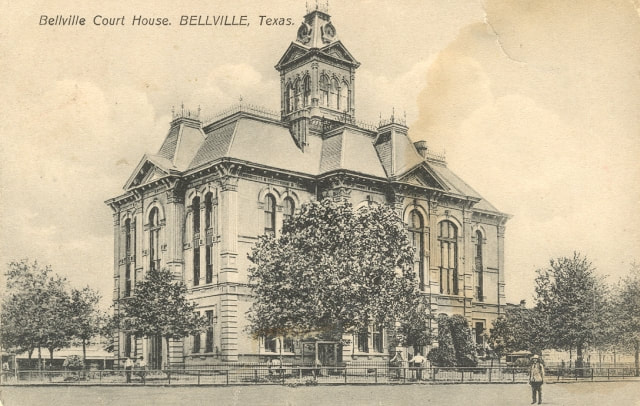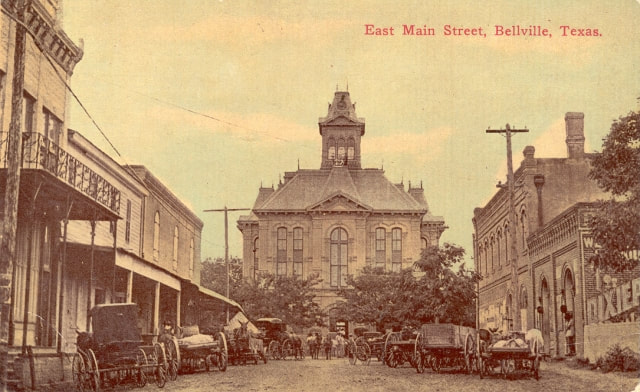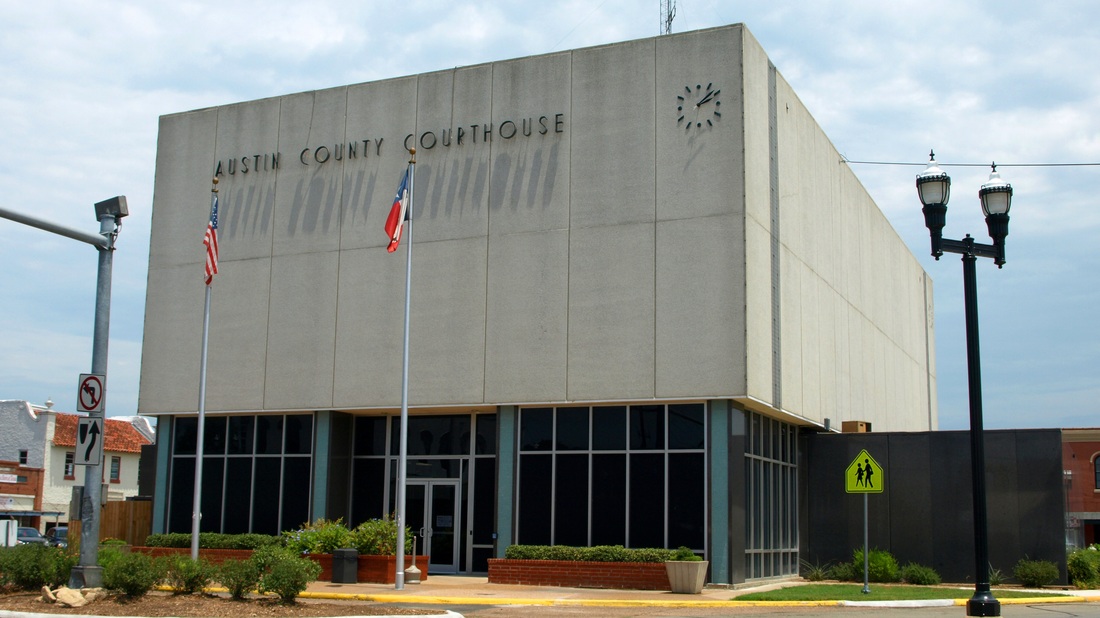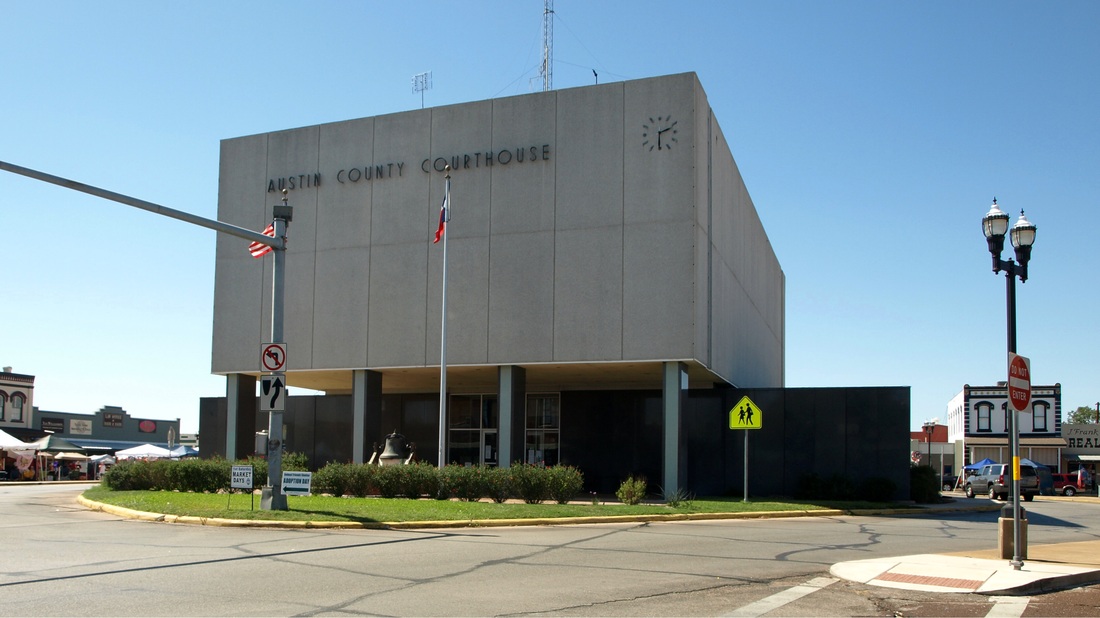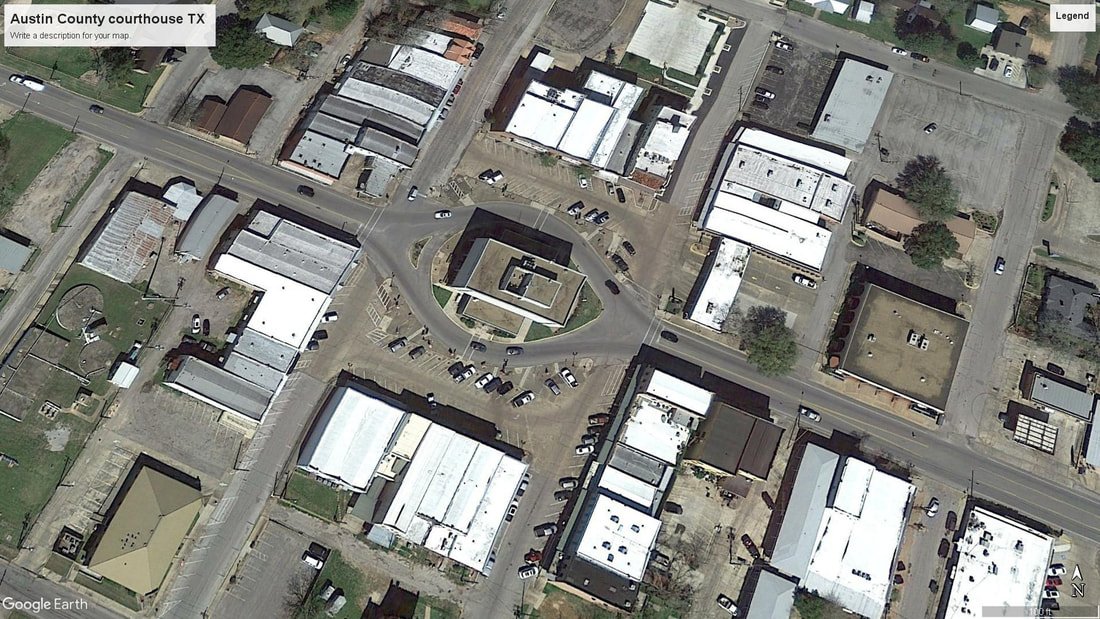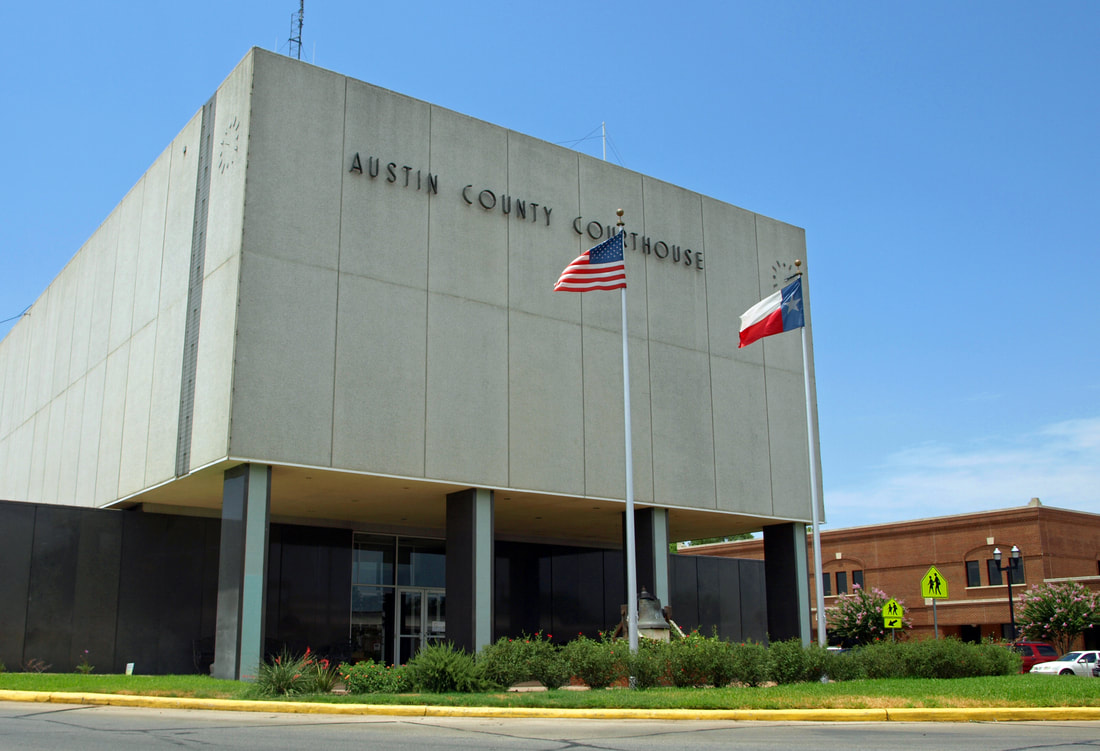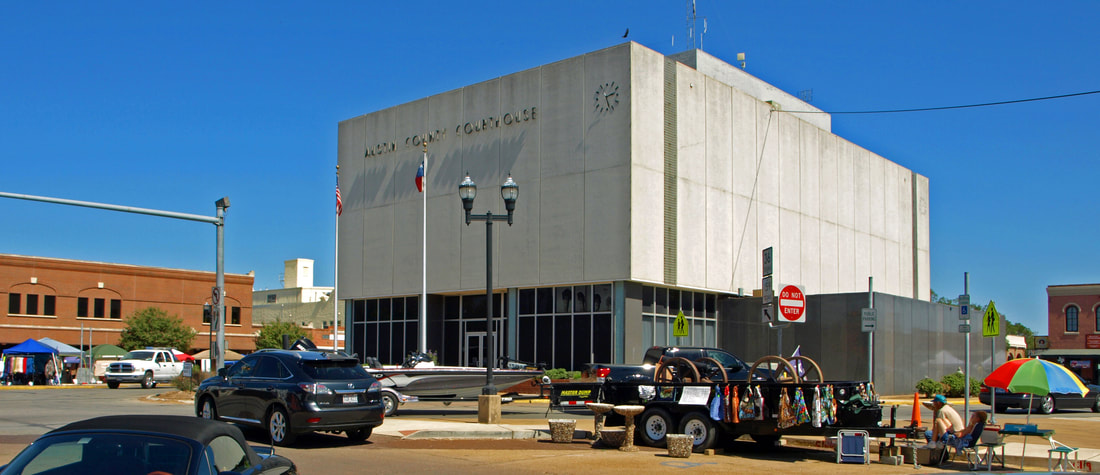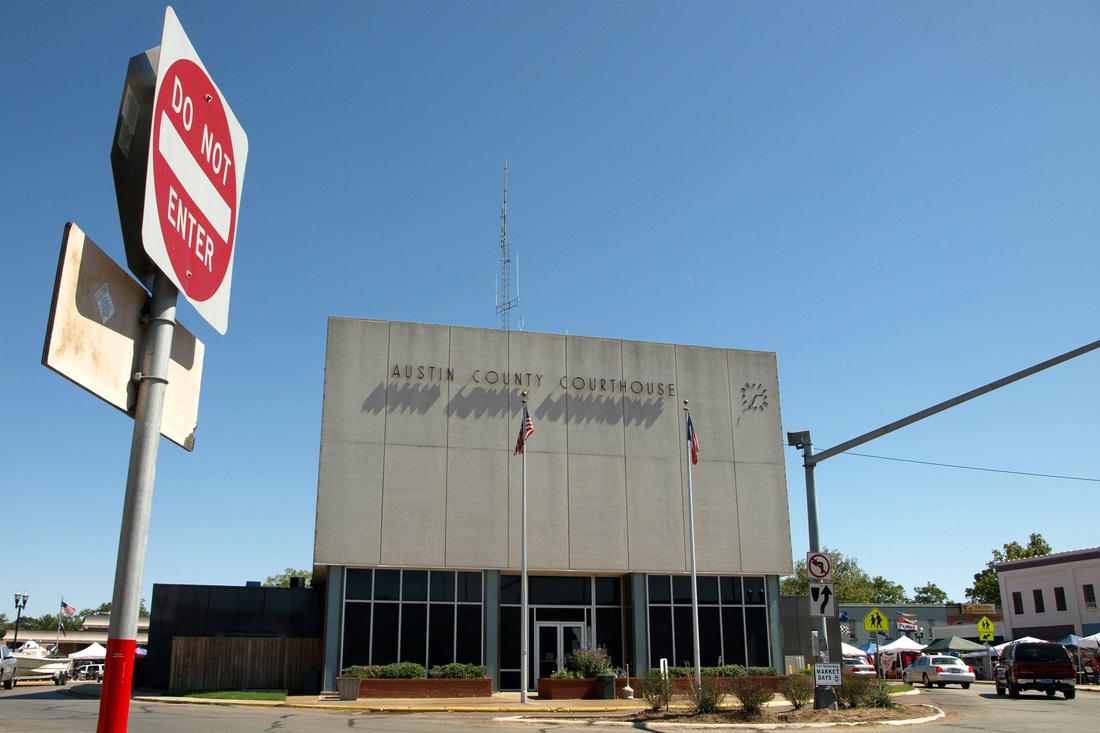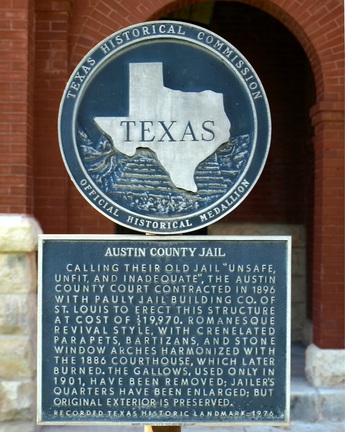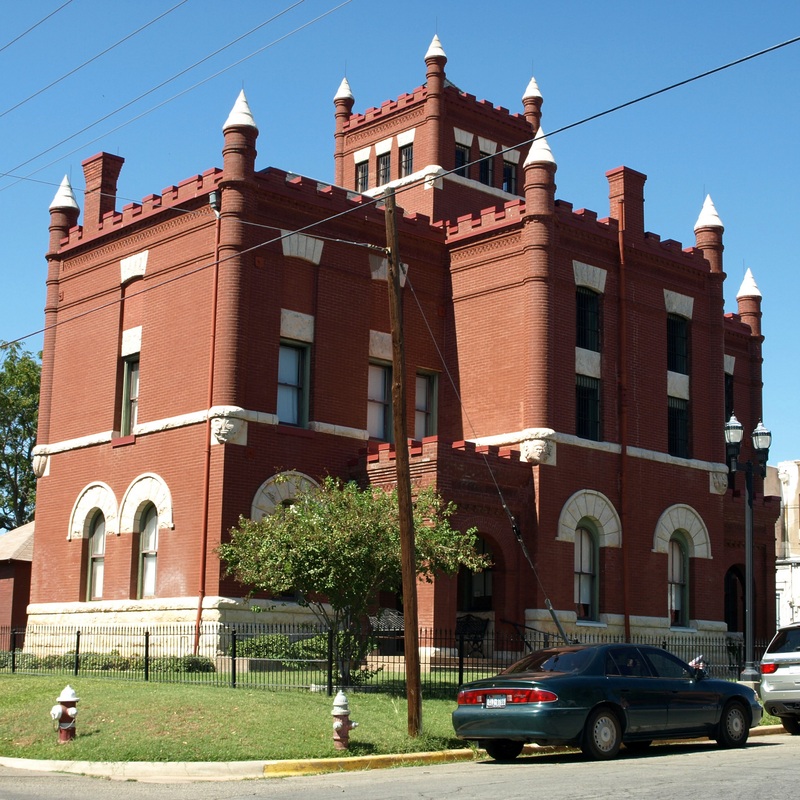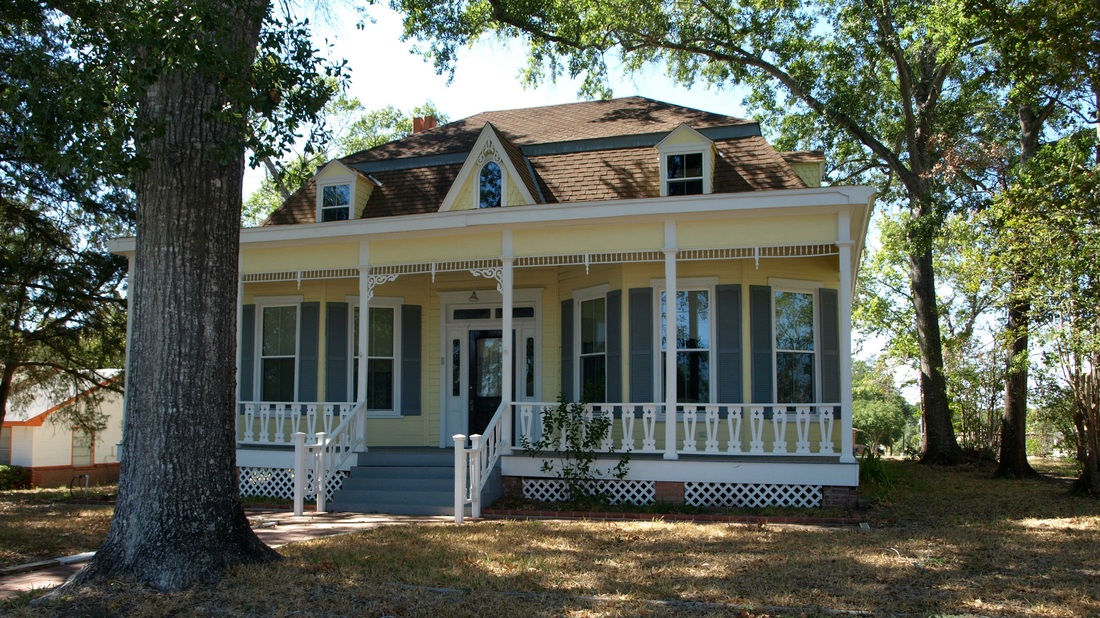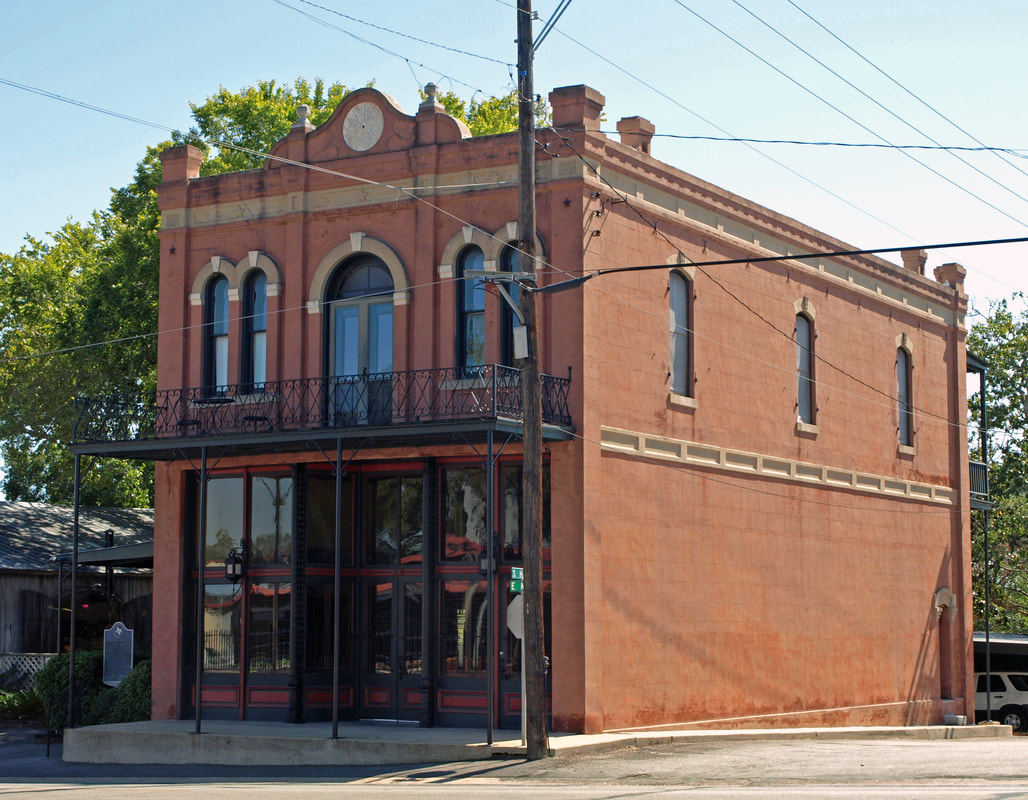017 of 254: Austin County Courthouse, Bellville, Texas. County Population: 28,417
Bellville - A Texas Experience
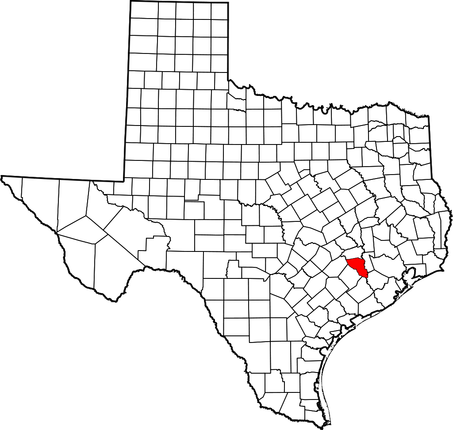
Austin County, Texas
"Austin County, in southeastern Texas thirty-five miles west of Houston, is bordered on the north by Washington County, on the east by Waller and Fort Bend counties, on the south by Wharton County, and on the West by Colorado and Fayette counties.
"Austin County covers 656 square miles on the boundary between the Post Oak Savannah and the Coastal Prairie regions of Texas. Elevations range from 460 feet above sea level in the northwest to 120 feet in the southeast. Most of the area lies within the drainage basin of the Brazos River, which forms the eastern border of the county.
"American settlement in the area began in the early 1820s with the founding of Stephen F. Austin's first colony. The area played an important role in the events of the Texas Revolution. The conventions of 1832 and 1833 were held at San Felipe and, as the site of the Consultation of November 3, 1835, the town became the capital of the provisional government and retained the role until the Convention of 1836 met the following March at Washington-on-the-Brazos.
"The Constitution of the Republic of Texas (1836) made counties of the former Mexican municipalities, and by 1837 Austin County, named in honor of Stephen Austin, had been officially organized. Although the burning of San Felipe left the town unavailable to serve as the capital of the republic, the partially rebuilt town became the county seat of Austin County. After a referendum of December 1846, however, Bellville became the county seat; this new community was near the geographical center of the county. The transfer of administrative functions was completed in January 1848."
Charles Christopher Jackson, "AUSTIN COUNTY," Handbook of Texas Online
I visited Austin County and photographed the courthouse in Bellville on July 17, 2009 and October 1, 2011
"Austin County covers 656 square miles on the boundary between the Post Oak Savannah and the Coastal Prairie regions of Texas. Elevations range from 460 feet above sea level in the northwest to 120 feet in the southeast. Most of the area lies within the drainage basin of the Brazos River, which forms the eastern border of the county.
"American settlement in the area began in the early 1820s with the founding of Stephen F. Austin's first colony. The area played an important role in the events of the Texas Revolution. The conventions of 1832 and 1833 were held at San Felipe and, as the site of the Consultation of November 3, 1835, the town became the capital of the provisional government and retained the role until the Convention of 1836 met the following March at Washington-on-the-Brazos.
"The Constitution of the Republic of Texas (1836) made counties of the former Mexican municipalities, and by 1837 Austin County, named in honor of Stephen Austin, had been officially organized. Although the burning of San Felipe left the town unavailable to serve as the capital of the republic, the partially rebuilt town became the county seat of Austin County. After a referendum of December 1846, however, Bellville became the county seat; this new community was near the geographical center of the county. The transfer of administrative functions was completed in January 1848."
Charles Christopher Jackson, "AUSTIN COUNTY," Handbook of Texas Online
I visited Austin County and photographed the courthouse in Bellville on July 17, 2009 and October 1, 2011
Austin County Courthouse 1888
On April 5, 1960, fire destroyed the historic 1888 Austin County courthouse, designed by noted Houston architect, Eugene T. Heiner. (The Austin County courthouse resembled the 1893 Jefferson County courthouse in Beaumont.) Rather than restore the old courthouse, the county decided to build a new courthouse, in the center of the town square, where the old building stood. The new courthouse, designed by Wyatt Hedrick of Fort Worth (architect of Houston's Shamrock Hotel), was a radical, modern departure from the beloved 1888 courthouse. Nevertheless, the new courthouse has now itself, become historic, having stood for over 50 years in the center of Bellville. Unfortunately, the building, a respectable modern design for the mid-twentieth century, is sited in the middle of what is a very busy traffic circle in the center of the Bellville square. The courthouse is thus an island in the middle of a sea of vehicles. Not exactly an ideal setting for a public edifice. Perhaps, someday, Highway 36 will be routed around Bellville in a bypass that will allow the county to remove the traffic circle and construct a more appropriate landscape for the courthouse.
